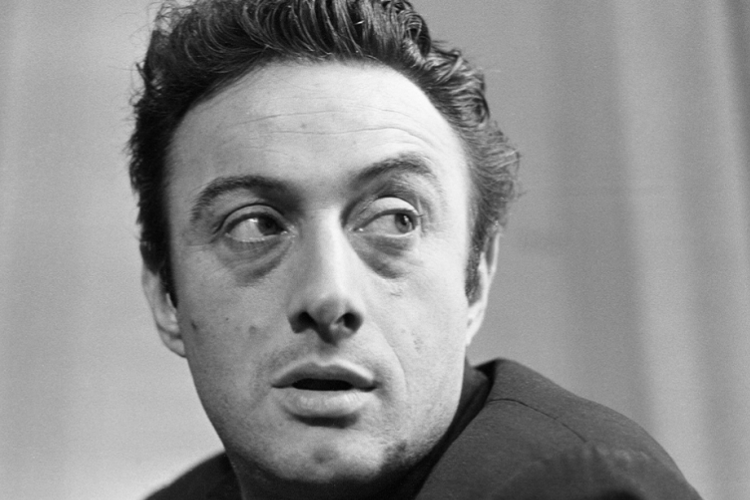Looking Back At The Life Of Comedian Lenny Bruce
Lenny Bruce is regarded as the originator of modern comedy, despite the fact that he never experienced the kind of enormous success that his disciples Richard Pryor and George Carlin did. He may have contributed more to the United States First Amendment’s guaranteed right to free expression than anybody else since its inception, mostly through his degrading on-stage antics. Make sure the kids are out of the room and get ready for the crazy voyage of one of the greatest stand-up comedians of all time. Bruce’s life was as legendary as it was filthy.

Comedic Beginnings
Bruce grew up in Mineola, New York, and witnessed his parents’ abrupt divorce. His mother tried her hand at comedy and dance before managing celebrities like Pat Morita (of Karate Kid fame), Cheech and Chong, and Sam Kinison at the start of their careers. His father went on to become a shoe salesman in California. Bruce first based his comic routines on his mother’s when he decided to try his own hand at it.
But he didn’t leap onto the stage right away. He enlisted in the Navy in 1942 when he was 16 years old, and he was sent to Italy and Northern Africa.

Maintaining Civilian Life
While stationed on the U.S.S. Brooklyn, Bruce had his first experience with comedy. He entertained his shipmates in drag in May 1945, but his superior officers weren’t amused. Bruce made the decision to capitalize on it by describing his performance as a release for his “homosexual urges.”
It’s unclear how honest Bruce was in his comments. Later, he said he made it all up to get out of the Navy, but he also filed a petition to have his discharge changed from “undesirable” to “honorable,” giving a description of his psychological condition at the time that was less extreme.
Whatever the reason, Bruce returned home in July 1945. Hollywood lore has it that Corporal Maxwell Klinger of the TV series M*A*S*H, whose frantic attempts to avoid duty included cross-dressing, was inspired by Bruce’s final months in the military.

Stripped Away
After leaving the military, Bruce moved to New York City and immersed himself in the world of stand-up comedy, appearing in clubs in the Catskills and coffee shops in the Village. He started touring furiously in 1949 after winning Arthur Godfrey’s Talent Scouts competition for aspiring artists, but his boring material didn’t help him get anywhere.
He began playing primarily in strip clubs in the early 1950s, when, ahem, comedians weren’t usually the major attraction. But the low-stress job was exactly what he needed. He was allowed to make more risqué observations since his audience was already sleazy and hardly paying attention to him to begin with. He talked about everything from racism and sex to drugs and religion.

God’s Will
Over the course of his career, Bruce ran into plenty of legal issues, but his first arrest had nothing to do with his contentious performances. In 1951, he tried to earn some extra cash by posing as a priest on the streets of Miami in an effort to persuade his then-wife to give up her work as a dancer. He made roughly $8,000 in about three weeks by posing as an employee of the Brother Mathias Foundation while wearing stolen clothing and priest collars. He was identified shortly after but managed to avoid imprisonment by giving around one-third of his earnings to a leper colony in Guinea.

Not Everyone Was A Fan
The comedy albums I Am Not A Nut, Elect Me! (Togetherness) and The Sick Humor Of Lenny Bruce helped Bruce achieve true success as his live act began to gain popularity in clubs across the nation. However, with this increased exposure came criticism from conservative politicians and local leaders who disapproved of Bruce’s activities.
Although he was exonerated of the allegation, his arrest in San Francisco on October 4, 1961, for obscenity for using the word “c—-sucker” onstage made him a target for local law enforcement all around the nation. After performances, he and the house managers who had hired him were frequently jailed. After giving a performance in the UK, he was even banned from the country.
Naturally, the controversy didn’t have any effect on his fanbase, which began to grow significantly and now included a large number of young people anxious to hear this “dangerous” new voice. The police once asked everyone in the audience to provide identification after Bruce was detained during a performance. One man found himself in the back of the police car with Bruce after refusing to produce his ID. It was George Carlin.

Later Years
Club owners were hesitant to hire Bruce despite the fact that he had grown to be one of the world’s most well-known comedians for fear of being imprisoned. In the meantime, he had to finance his family and a growing drug addiction, so in 1964 he published the book How To Talk Dirty And Influence People, which was serialized for Playboy. He also started writing for The Realist magazine.
Soon after, in 1966, his lifeless body was found in the bathtub of his Hollywood Hills residence next to a charred bottle cap and syringe. More than 500 people, many of whom were carrying box lunches and noisemakers, attended his memorial service after it was found that his death was caused by “acute morphine toxicity caused by an overdose.”

